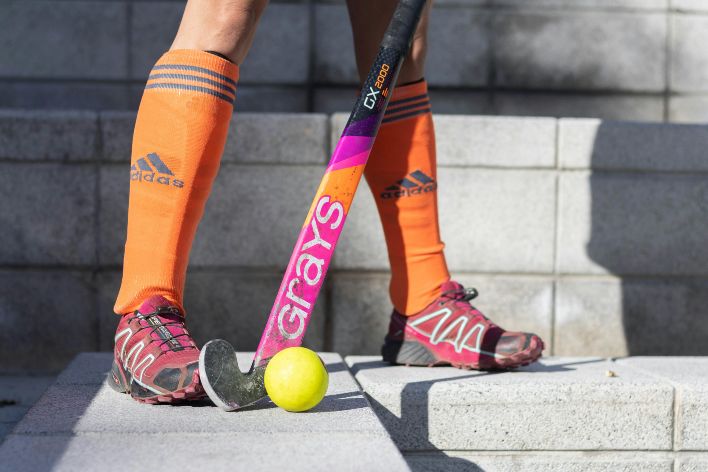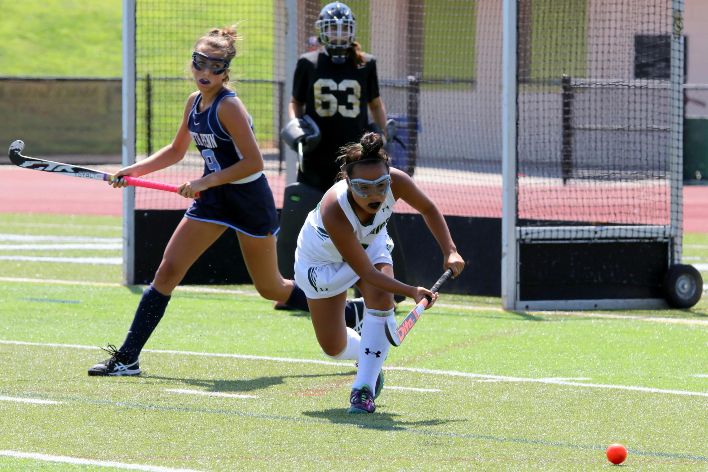Safety in Youth Hockey
By Pinkey Sharma |
Date 07-08-2024

Table of Contents
Admissions Open for
Either ice hockey or field hockey, the game has appealed to many young athletes. Action, speed, and skill are combined with a great deal of strategy involved in hockey. Being a contact sport, though, many concerns are raised about the safety risks for any player. Keeping youth hockey players safe is essential to their development and enjoyment of the game. This all-inclusive guide will aid in delving into every bit associated with safety in youth hockey, laying emphasis on proper equipment, adherence to the rules of safety, and education of all concerned toward injury prevention.
Why Safety Is a Necessity in Youth Hockey
Youth hockey is particularly an extremely injurious sport because it is fast and physical contacts are at a high rate. Some of the common injury types in connection with youth hockey include concussions, broken bones, and sprains. The impact may be long-lasting, and sometimes it extends to affect the mental and emotional aspects of the health of the young athletes other than their physical health. Coaches, parents, and organizations are helping to cultivate a culture of safety through their role. The more they know the risks that might possibly happen, the better they shall be in preparing preventive measures to lessen the occurrence of injuries and make the playing environment much safer.
Safety Equipments in Hockey
1. Helmets and Face Shields:
The helmet is no doubt the most crucial safety equipment in hockey since the players are more vulnerable to head injuries. The helmets come fitted with a face shield or cage to protect the face from pucks and sticks.
2. Mouthguards:
Mouthguards cushion some of the blows given on the teeth, thereby reducing the chance of concussion.
3. Neck Guards:
It will also include neck guards, which keep the neck area safe from cuts and other impacts, as the neck area is very susceptible to that kind of attack.
4. Shoulder Pads, Elbow Pads, and Shin Guards:
These pads protect the upper body and limbs from falls, pucks, and collisions with fellow players.
5. Gloves:
Gloves protect hands and fingers from pucks, sticks, and falls, providing better grip and control over the stick.
6. Hockey Pants:
Hockey pants are padded to protect the hips, thighs, and lower spine from impacts and falls.
7. Skates:
Skates, of course, have to be fitted properly so that they provide the best mobility and protection. They should have good support on the ankles and also be sharpened regularly to maintain their performance.
8. Innovations in Safety Equipment in Hockey:
Improvements in the last couple of years make this safety equipment lighter, more efficient, and comfortable. Needless to say, improved protection of the player comes with no adverse impact on the performance.
Field Hockey Safety

Protective Field Hockey Equipment
Although they share the same name along with some basic game principles, they are quite different by playing surface, equipment, and levels of physical contact.
1. Shin Guards:
Shin guards are essential in field hockey due to the amount of play focused on lower legs using a stick. It keeps the lower legs safe from the impact of the ball and that of the stick.
2. Mouthguards:
The use of mouthguards in the game keeps the teeth safe as well as the mouth from injuries.
3. Goggles and Face Masks:
Goggles or sometimes even face masks are worn to protect the eyes and face from the ball or stick that travels at high velocity, mainly in leagues where children are participating.
4. Gloves:
Gloves worn during playing field hockey serve the purpose of protecting the hands and enhancing holding or gripping of the stick, mainly with the non-favorite hand, since that has more exposure to contact.
5. Appropriate Footwear:
Field hockey shoes should have soles that provide proper grip on grass or artificial turf. Slippage and falling could be fatal.
Hockey Safety Rules
General Safety Rules:
Following all safety rules is the cornerstone of prevention regarding injuries to the young hockey player. Body checking rules, for example, are developed to minimize dangerous contact.
Body Checking Rules and Regulations:
While most of the rules regarding body checking change with age and league levels, as a general maxim, the different hockey leagues have developed rules and regulations to de-emphasize the physical nature of the game at the younger ages.
Penalties against Unsafe Play:
Penalties are in place to prevent activities that have the potential to result in injury, whether by high sticking or boarding.
Role of the Referees and Officials:
It is the job of the referees and other officials to implement rules in a way that permits continuance of the game in a form that safeguards the safety of players.
League and Tournament Guidelines:
Most of the leagues and tournaments set some safety measures that are to be adhered to by each and every person involved in the playing field to ensure safety while playing.
Safety in Youth Hockey
Training and Conditioning for Safety
Importance of Physical Fitness:
Physical fitness forms the foundation of injury prevention among young athletes in hockey, it enables the young athlete to gain the ability to absorb hits associated with the game.
Safe Training Practices:
Establish safe training practices, particularly during exercises or drills, to avoid overuse injuries and prevent instances that individuals are taken too far beyond their capacity.
Strength and Conditioning Programs:
These programs enable the development of strength, flexibility, and stamina, which are very important in preventing injuries and optimizing performance.
Warm-up and Cool-Down Routines:
The intensity of the sporting activity should have its equivalent in proper warm-up and cool-down rituals to prepare the body for the action and help with recovery, thus reducing the risk of getting injured.
Concussion Awareness and Management

Understanding Concussions:
One of the more serious concerns with youth hockey is concussions. A concussion is an injury to your brain wherein this has been moved or jolted in your skull due to a blow to your head or body.
Concussion Symptoms:
Headaches, dizziness, confusion, nausea. Be sure to know the early signs.
Steps to be Taken If a Concussion Ever Occurs:
Immediately remove athletes from the game or from practice and, when in doubt, get them medical evaluation.
Long-term Management and Guidelines for Return to Play:
A concussion needs a stepwise progression to be followed in return-to play protocol prior to allowing the athlete to return to activity in order to ensure that the athlete has fully recovered.
Role of Baseline Testing:
Baseline testing refers to the comparison of an athlete's cognitive processes at baseline before the start of a season, compared to the suspected concussion.
Prevention and Best Practices
Building a Culture of Safety:
The best road towards a culture that is keen on safety is education of the coaches, players and even parents on safety issues and methods of injury prevention.
Education and Training for Coaches, Players, and Parents:
Safe playing mannerisms can be disseminated in a number of ways, either through repeated training sessions or through a few minutes in which such players become more aware regarding correct playing mechanisms and such minutes get maximally promoted for practice in games.
Regular Drills on Safety and Practices:
Players exposed to a feeling of making use of safety drills can help develop safe ways to play and respond to common injury conditions.
Hydration and Nutrition:
Safe playing demands the best level of energy and good health, thus keeping off injuries and assuring good performance.
Mental Health and Its Contribution to Holistic Safety:
Mental health is part and parcel of general safety. It is unlikely for an athlete to perform at their best when under stress, anxiety, or any other form of mental issue. Additionally, a mental issue will increase an individual's potential risk for a possible injury.
Case Examples and Applications in Real Life:
The safety programs case studies also help the reader understand further good safety practices. Expert Interviews: From the realm of professionalism for safety concerning youth hockey, readers will be introduced to expert views on current trends and future developments in this area. Such experiences may be elicited during the discussion of safety in youth hockey and give a very strong message concerning the need for these practices.
Resources and Support for Safety in Youth Hockey
Hockey Safety Organizations
Seminar, workshop and training programs: These can indeed provide much information and also develop the skills in planning safety into the youth hockey programs.
Online resources and tools: The online resources indeed relate to incessant learning opportunities, therefore one is able to keep updated with these best and latest safety practices and guidelines.
Conclusion
Safety in youth hockey is complex. It has to come as a result of the efforts combined from the coaches, parents, players, and organizations. Applying protective gear correctly and following the safety regulations have made the game much more secure. Education should be the reason why the game becomes so much safer for a young athlete. Now it is up to us to see that young players develop their skills and love for the game but without running unnecessary risks, which will secure their safe future in youth hockey.
FAQ’S
What are the safety rules in hockey?
The safety rules in hockey include mandatory protective gear like helmets, mouthguards, and padding. Body checking and high sticks are regulated to prevent injuries. Players must follow proper techniques and sportsmanship, with penalties for dangerous plays.
How can hockey be safer?
Hockey can be made safer by enforcing strict rules against dangerous plays, ensuring players wear all necessary protective gear, and providing proper training on safe techniques and sportsmanship. Regular equipment checks and maintaining a safe playing environment are also crucial.
How to play field hockey safely?
To play field hockey safely, always wear proper protective gear, including a mouthguard, shin guards, and a helmet. Warm up and stretch before games and practices to prevent injuries. Stay aware of your surroundings on the field to avoid collisions. Follow the rules and use proper techniques to ensure safe play.
Liked what you read? Feel free to share this article with your friends and spread the knowledge!
Related Blogs
A Comprehensive Guide for Hockey: Find the perfect hockey program for your child with our comprehensive guide.
Getting started in Hockey for kids: Uncover essential tips for getting kids started in hockey.
Learning Hockey skills: Unlock your hockey potential with essential skills and techniques.
CBSE Schools In Popular Cities
- CBSE Schools in Bangalore
- CBSE Schools in Mumbai
- CBSE Schools in Pune
- CBSE Schools in Hyderabad
- CBSE Schools in Chennai
- CBSE Schools in Gurgaon
- CBSE Schools in Kolkata
- CBSE Schools in Indore
- CBSE Schools in Sonipat
- CBSE Schools in Delhi
- CBSE Schools in Rohtak
- CBSE Schools in Bhopal
- CBSE Schools in Aurangabad
- CBSE Schools in Jabalpur
- CBSE Schools in Jaipur
- CBSE Schools in Jodhpur
- CBSE Schools in Nagpur
- CBSE Schools in Ahmednagar
- CBSE School In Tumkur

Call Us to know more about Orchids
Swipe Up
















